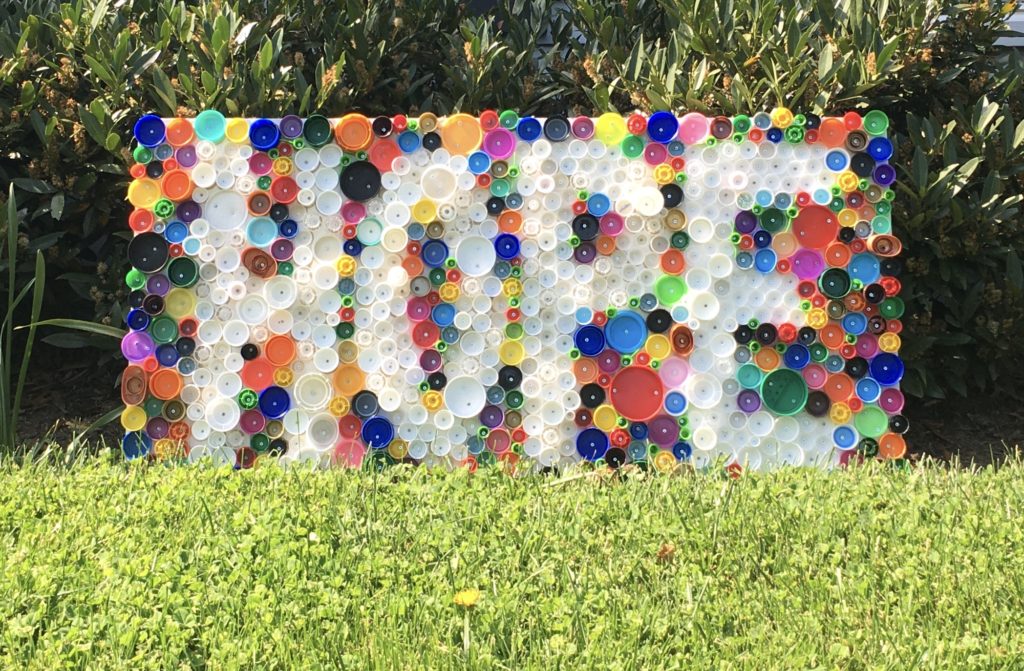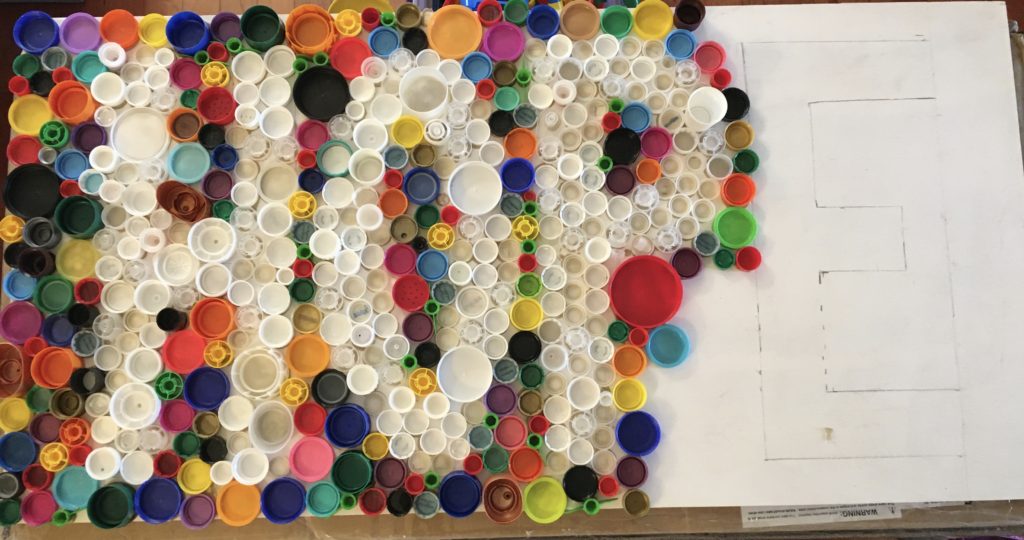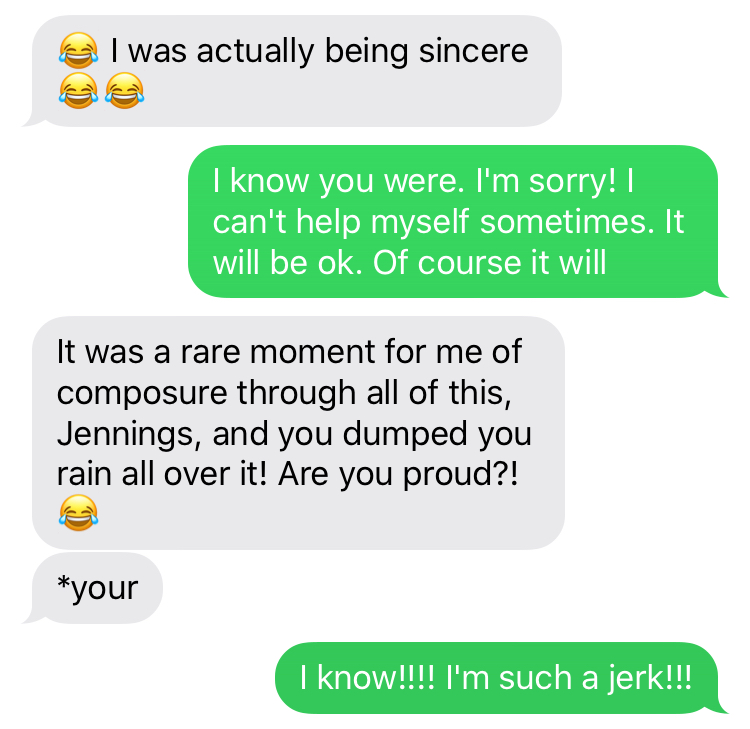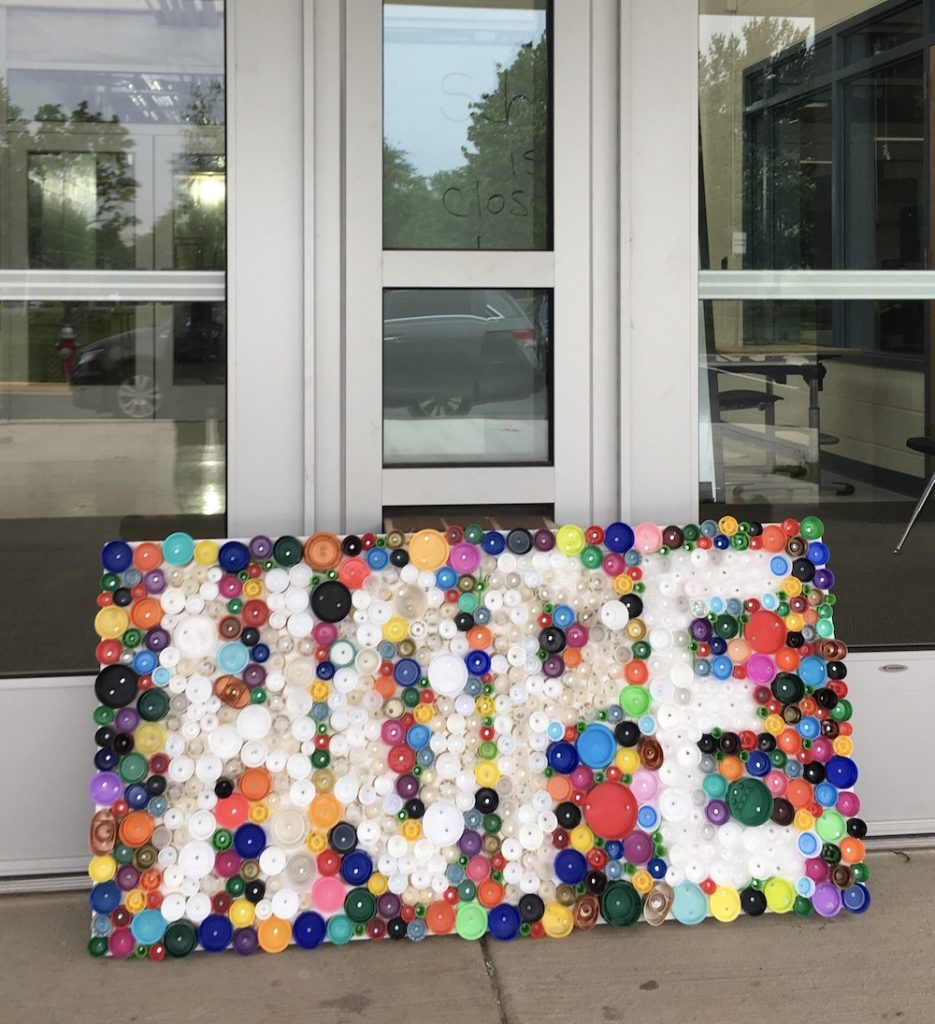
Wednesday night I woke to the sound of crying. Not the baby, but 8-year-old Jovie who was up in her loft bed sobbing because she couldn’t sleep. I shuffled, half asleep, into her room, climbed up the ladder and lay down next to her, pulling the quilt my mom had made for her when she was a baby over me. I knew I was going to be up there for awhile.
Despite the darkness and my contactless nearsightedness, I could see Jovie’s eyes were wide open and shining.
“I can’t fall asleep,” she moaned.
It’s like this at least four or five nights a week now. Jovie needing hours to find the sleep she’s desperate for.
“I can’t do it!” she’ll call into the living room from the bottom step of the staircase. Squeezing her trusty fleece blanket to her face like Linus from “The Peanuts.” I’ll remind her that there’s never been a night when she hasn’t fallen asleep. That sleep will come- but that she can’t over-think it. Can’t focus too much on it.
There’s a whole list of strategies we run through to help her get to sleep. Reading. Writing down all her worries. Reviewing scenes from her favorite movies in her head from start to finish- noting each little detail and line. Following the ins and outs of her breath.
As I laid up in her loft bed the other night, I tried to breathe with her. Patting her leg softly while taking slow, even breaths to help her calm down.
I drifted in and out of sleep. Finally, at 2:30, I thought she was asleep, so I climbed back into my own bed.
Jovie started wailing again. I went back to her room.
“Just go sleep in our bed,” I told her. “Maybe you just need a change of scenery.”
So she crawled in next to Brad and I climbed back into her bed and spent the rest of the night tossing and turning, surrounded by stuffed animals and dolls.
The next day, Jovie and I found each other in the hallway.
“Did you get some sleep?” I asked.
She nodded. “Are you tired, Mom?”
“A little,” I admitted. What else is new?
Jovie’s insomnia is just one of the more weird symptoms we’ve been living with during our life in quarantine. Along with Lily’s massive meltdowns over math lessons, my obsessive vacuuming and Brad’s beard. We’re all trying to do the best we can. But the oddity of the situation keeps seeping out of the crevices of our lives. We’re each processing the disruption, the confinement and the isolation the best we can.
Jovie got ready for her first session Thursday morning, putting on sundress she’d received from her grandparents for her birthday. It was overcast and cool, not really suited for a Maxi dress with spaghetti straps, but Jovie wasn’t phased.
“Wearing a pretty dress makes me feel happy,” she told me.
I pulled her in for a hug. Then styled her hair in two French braids for virtual school– something I hadn’t been able to do when I was heading off to middle school in the morning. Who cares that she’d been spending her school day at our dining room table in front of a computer screen– she still needed to feel good.
“You look pretty,” I told her.
“You look pretty, too, Mom,” she responded. Laughable, considering I had bags under my eyes and was wearing leggings and a T-shirt with my hair pulled high on my head in some sort of pony-tail-bun hybrid.
Thank goodness for Jovie. Her quiet wisdom always nudging me along the path greater contentment.
Back when all this started– why does that line feel so dramatic? So ancient? Like we’re all the narrators of dystopian novels that begin with lines like, “Back before the aliens invaded.” Or “Back before the nuclear holocaust.” Like we’ve been living a post-apocalyptic existence for decades, rather than maintaining a perfectly adequate, if not kind of annoying, existence in comfortable suburban quarantine for a couple of months. I wonder if Einstein were alive right now that he’d point to his Theory of Relativity and say, “See! This is what I was talking about!” How in the quiet confinement of social isolation time seems to bend and stretch and contort depending on the hour and the person.
Where was I?
Ah yes, back before the global pandemic, I decided to start another bottle cap sign. This one was going to be a collaboration with Jovie’s second grade class- created by the students for the school’s silent auction. But with schools being closed for the foreseeable future, the silent auction was postponed. I needed a good quarantine project, so I decided to make the sign anyway.
The word I selected, with the help of Lily and Jovie, was “Hope.”
For obvious reasons probably.
I began by painting the 4×2-foot piece of plywood I’d picked up at Home Depot white. I outlined the letters for the word in pencil. Hauled out the box of plastic bottle caps I’d been collecting (sorted by color, naturally) and found outoor-ready, plastic and wood friendly super glue. I envisioned this project to be similar to the “Love” sign I’d made previously. Bright white letters surrounded by a rainbow of caps.
The first roadblock came at the letter “H.” I couldn’t find the same type of glue I’d used for my last project, which dried clear. This glue dried into a dark tan. Which wasn’t a problem so much when I was glueing colored caps on, but kind of muddied the brightness of the white and clear caps I was attaching for the letters.
But it wasn’t exactly the time to go running out to hardware and craft stores to find the perfect super glue. So I let go of the idea that the letters would look just as I’d envisioned them.
As it turns out, creating hope is a little messy
I soon found out there were bigger problems with the glue than color as Annie started plucking glued-on caps off the plywood, with the ease of the dog stealing bites of food of the table.
Just “pop” “pop” “pop”. Off they came.
“Uh oh Mom!” she’d yell with each cap.
At a certain point, I decided to switch from glue to screws. I’d wanted to use screws for the first project, but the plywood I’d purchased wasn’t thick enough and couldn’t find screws that wouldn’t end up poking through the back. This time, I’d bought heavier plywood, but shied away from the screws because, what do I know about power tools?
As it turns out, you don’t need to know much when all you’re doing is using a drill to screw in plastic bottle caps.
Jovie liked how they added some extra shine to the project, too.
And then there was the final hurdle: the scarcity of white bottle caps in my stash.
To be honest, I knew that I was short white caps going into the project. When you’ve been collecting plastic bottle caps for years, you become a bit of an expert on the colors your family tends to accumulate the most. In our house it’s yellow, blue and purple (apple sauce pouches, milk and orange juice). White caps seemed to be reserved for condiment and medicine bottles, things that that take a little while to empty. But I wanted to stick to my vision.
I ran out of white caps at the letter “P.”

I bugged my neighbors many times to save white caps for me. And though they probably had understandable questions about the nature of my trash crafting (trafting? crashting?) they helped me out.
I finished the “E” with a Ziploc sandwich bag full of clear white caps left on the porch of a neighbor I know nothing about other than that her son apparently prefers bottled water.
Creating the sign was a meditation on the subject of hope. And perseverance, acceptance and flexibility.
When I started it in early April, the word “Hope” felt light and airy. Full of promise and possibility. The exact sort of word you’d post in a classroom or a yoga studio.
It carried this sort of rainy day ending in a rainbow sort of frivolity to it.
But as the quarantine wore on and the news became grimmer and the idea of a return to normal day-to-day life became foggy, amorphous and unattainable the word began to feel heavy. Weighted down by misguided and futile expectations. Distorted by day after day in the same four walls. Walking the same sidewalks. Having the same conversations.
In the midst of the sign making and of the tedium, I was listening to a conversation about the book “When Things Fall Apart” by Pema Chodron, a Buddhist nun. I love this book and share it with anyone I come across who’s struggling in life.
During the discussion, I was reminded of a passage in the book where Chodron advises us to abandon hope.
“Hope and fear come from feeling that we lack something; they come from a sense of poverty. We can’t simply relax with ourselves. We hold on to hope, and hope robs us of the present moment. We feel that someone else knows what is going on, but that there is something missing in us, and therefore something is lacking in our world.”
“When Things Fall Apart,” Pema Chodron
There it was. The path to weathering difficult times: Giving up hope.
“Without giving up hope—that there’s somewhere better to be, that there’s someone better to be—we will never relax with where we are or who we are,” Chodron says.
But there I was literally, trying to piece together Hope.
It was all very comical.
It makes complete sense to me. Life is better without the burden of always wishing for and anticipating the next thing. The beach vacation. The birthday party. The bigger house. The nicer car.
Life is better when you find peace in the present moment.
But abandon hope? Am I ready to do that?
What is a lapsed Catholic, Buddhism curious, idealistic American trying to make sense of social isolation in the midst of a global pandemic to do?
I’m not ready to give up on the beauty of hope.
I’m not talking about the unquenchable thirst type of hope. Not the dictionary hope that as a verb, “wants something to happen or be the case” and as noun is “a feeling of expectation and desire for a certain thing to happen.” The kind that always leaves me yearning for something better than this present moment
But that other type of hope. One that feels sturdier. One that can handle being dirtied and picked off and that carries on, even when it doesn’t seem like there’s enough of it.
A hope that’s less cock-eyed optimism. More scrappy and hard-earned through hardship and discomfort.
I was trying to figure out whether that type of hope was a thing or whether I needed another word entirely and wondering how I could square it with the call to abandon hope completely when I came across an article by a Buddhist teacher. She separated ordinary hope– dictionary hope– from something called wise hope.
“Wise hope is not seeing things unrealistically but rather seeing things as they are, including the truth of suffering—both its existence and our capacity to transform it. It’s when we realize we don’t know what will happen that this kind of hope comes alive; in that spaciousness of uncertainty is the very space we need to act,” writes Roshi Joan Halifax, abbot and head teacher of Upaya Institute and Zen Center in Santa Fe.
I think that’s the type of hope I’m after. That we can’t know exactly what’s going to happen, but that we can attempt to be better within that. It’s actually the exact thing a friend texted me the other day:
“But in the end, we’ll be OK, right? We’ll support each other and learn and grow and find ways to heal.”
She caught me in a moment of cynicism and sarcasm (let’s be honest though, a majority of my life is sarcasm.
“Oh sure! Everything’s going to be fine. Everything’s great! Optimism! Etc. etc.,” I replied. Which was just as disingenuous as it sounds. She called me out on it. Which was exactly what she should have done.

Here’s the deal. I’m finding beauty in this present moment. How delicious the breeze feels through my open windows. How astounding it is that the tiny sparrows in my yard can produce such a wide variety of songs at such high volumes. The generosity of my beautiful neighbors who dropped off a gift for us as they prepared to celebrate Eid. Spotting the first dragonfly of the season. Watching Annie dance. Reading “The Lion the Witch and the Wardrobe” to the girls before bed, just like my dad did for me.
All these things fill me with gratitude and quiet the panicked voices telling me I have to assign an end date to the pain of the moment and a start date for the launch of joy.
Wise hope, I think, is the understanding that both of these things occupy space within our existence in equal measure. And finding peace in that.
It’s probably no accident that so many faiths have periods of fasting or deprivation baked into their worship. Lent and Yom Kippur and Ramadan. That’s where the growth happens. Abstaining from the things your body craves actually ends up feeding your soul.
And maybe during this time, we’re all getting a small taste of that experience. That is where I find hope.
When I finally finished the “Hope” sign I asked the principal at the girls’ school if she’d like it for the school. She accepted it.
When I dropped it off the other day outside the front door– the first time I’d been there in months– my throat caught. There was a whiteboard just inside the doors.
“School is closed today” it said.
And I felt this wave of sadness pass through me, quickly followed by a wave of peace.
All because of the word “today.”
Because today isn’t forever.
It’s just a brief span of time in a series of brief spans of time that make up our lives here.
“This won’t last forever,” I tell Lily when she wants to throw the computer out the window. “This won’t last forever,” I tell Brad when his face gets extra drawn and he looks like there will never be a fun day in his life ever again. “This won’t last forever,” I tell Jovie on the long quiet nights she can’t find sleep.
In the mean time, what else do we do but carry on?
Cry when you need to. Create happiness where you can. Follow Jovie’s advice: Put on a pretty dress. Braid you hair. Make a fart joke.
We’ll all keep carrying on. And there will definitely be more pain but there will also definitely be more joy. And that’s all wrapped up in this moment. Right now.
Here.
Where hope is.


I saw your sign today on my walk and smiled – it’s in the right place at the school – Hope – school days will come again…
This is so profound. You just composed all of my jumbled up emotions into something I can grasp. This is tough! It sucks! I thought surviving a stroke in 2018 and deciding to retire from my old way of life was rough…Blessings, plans, mostly CONTROL. Now to be 65 years old and be made to feel you are disposable. Please keep writing ✍️ you have such a fabulous gift 💝. I was truly blessed when I became a part of your family. Love Millicent Diane Waller Munnett I have saved this musing to my favorites🌸🌺🌻😎😜